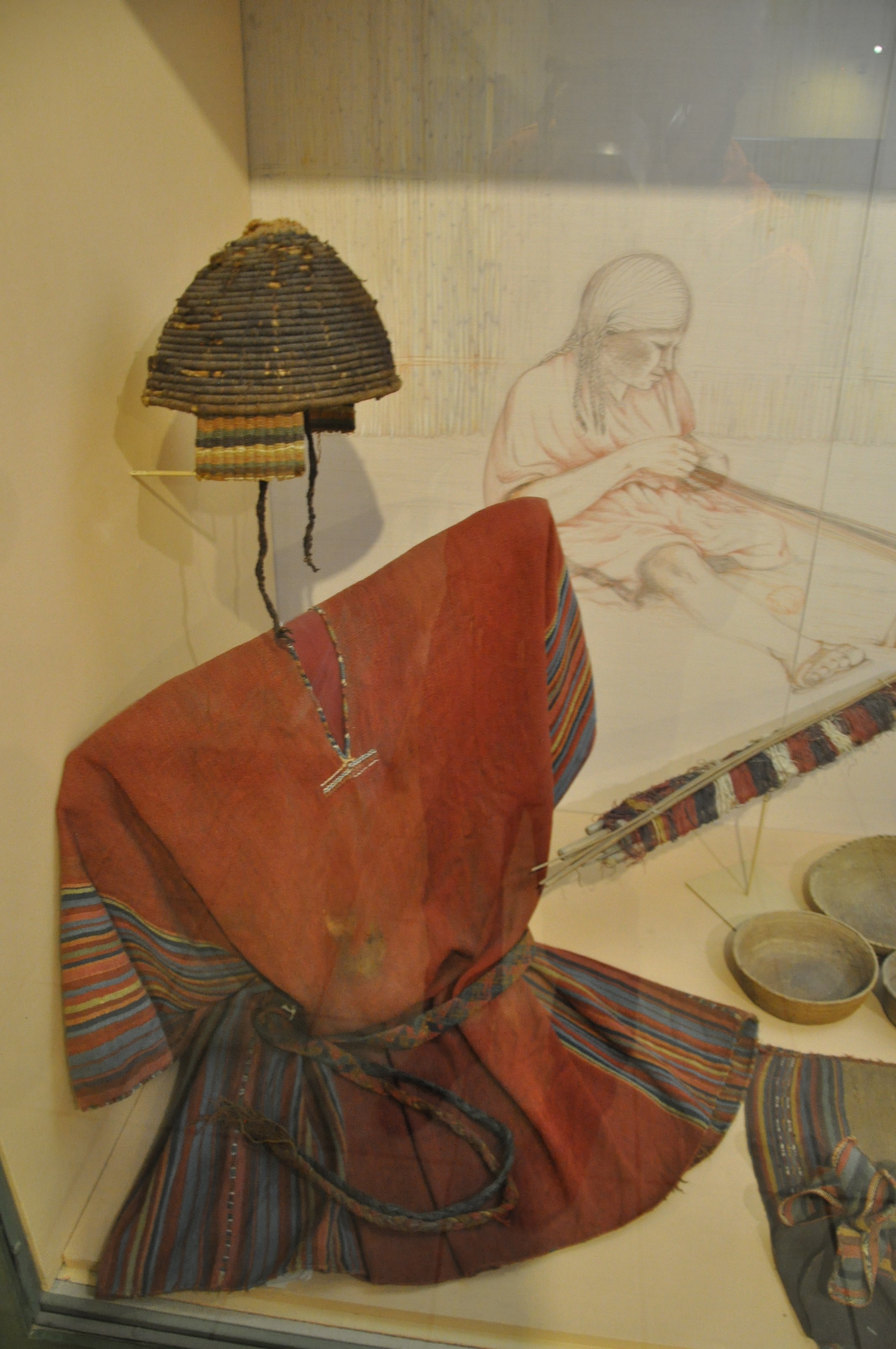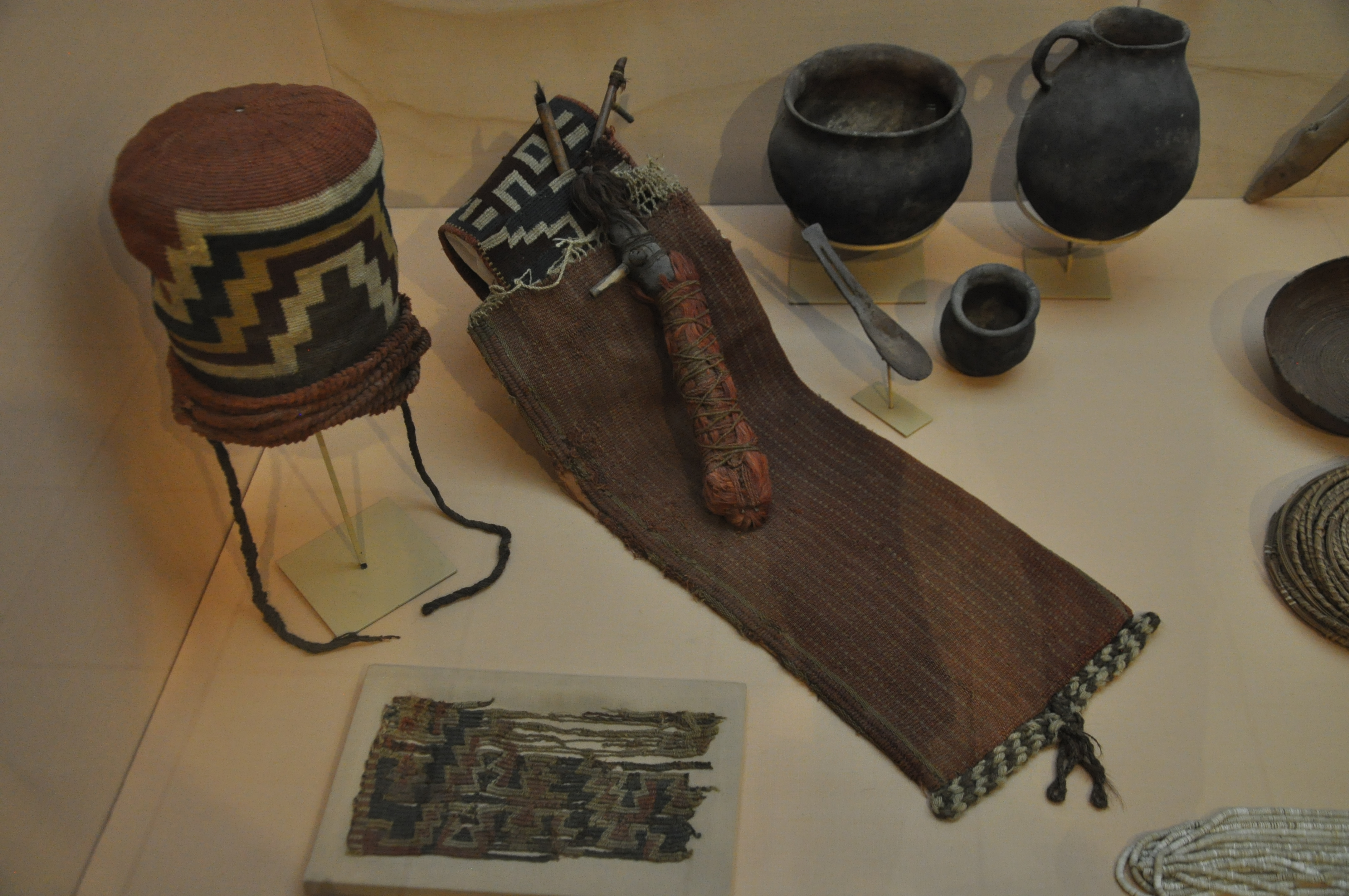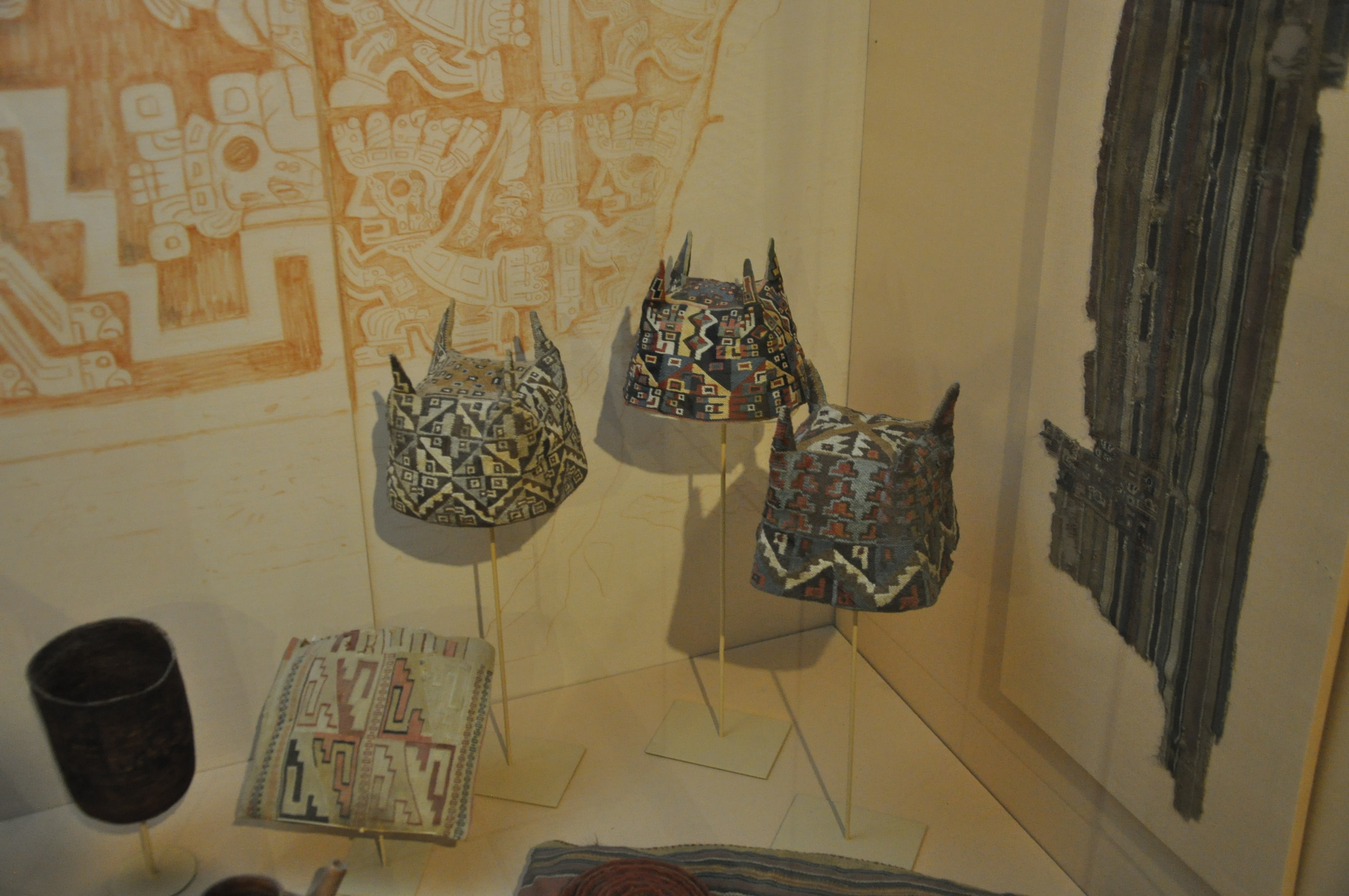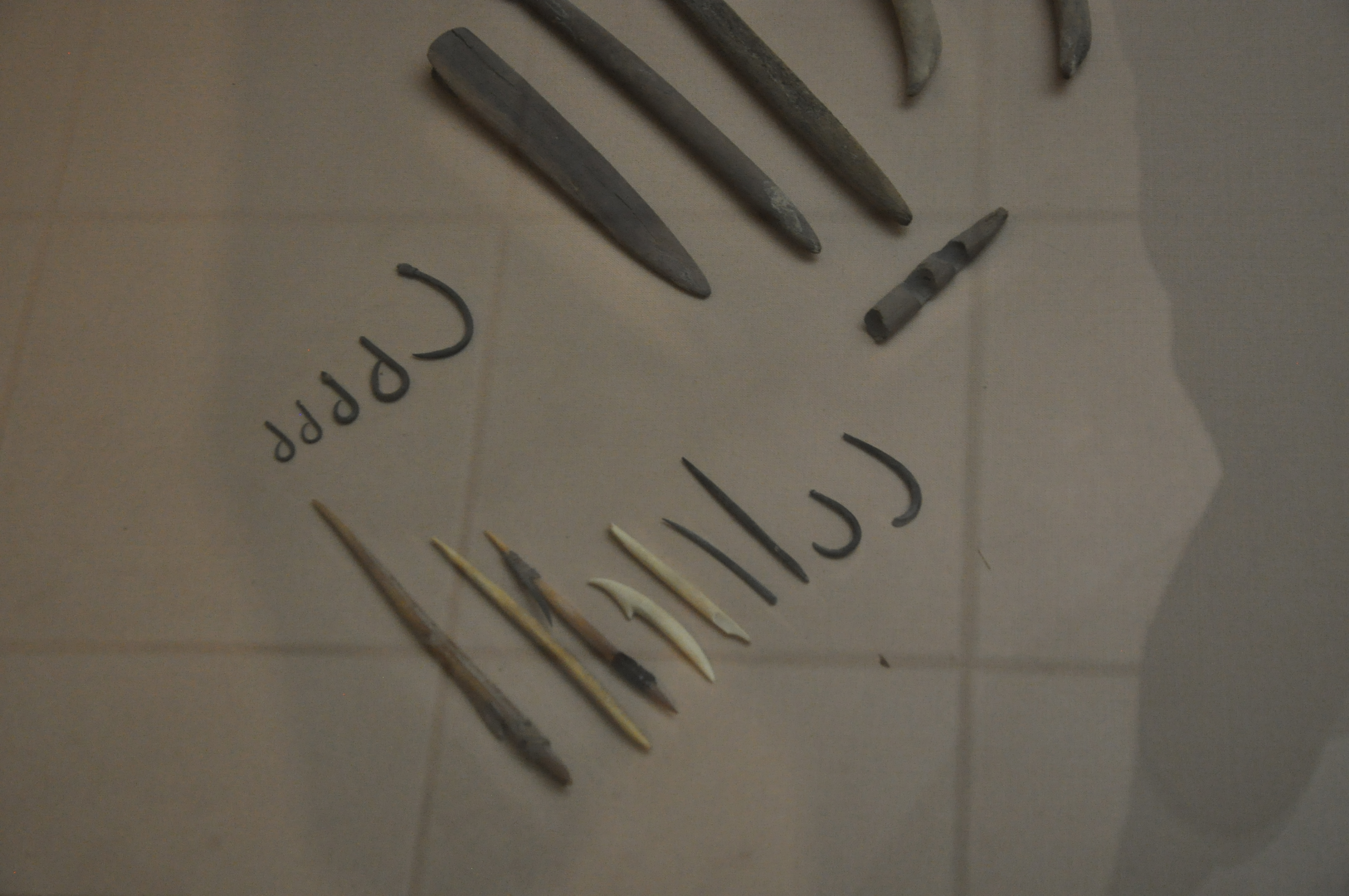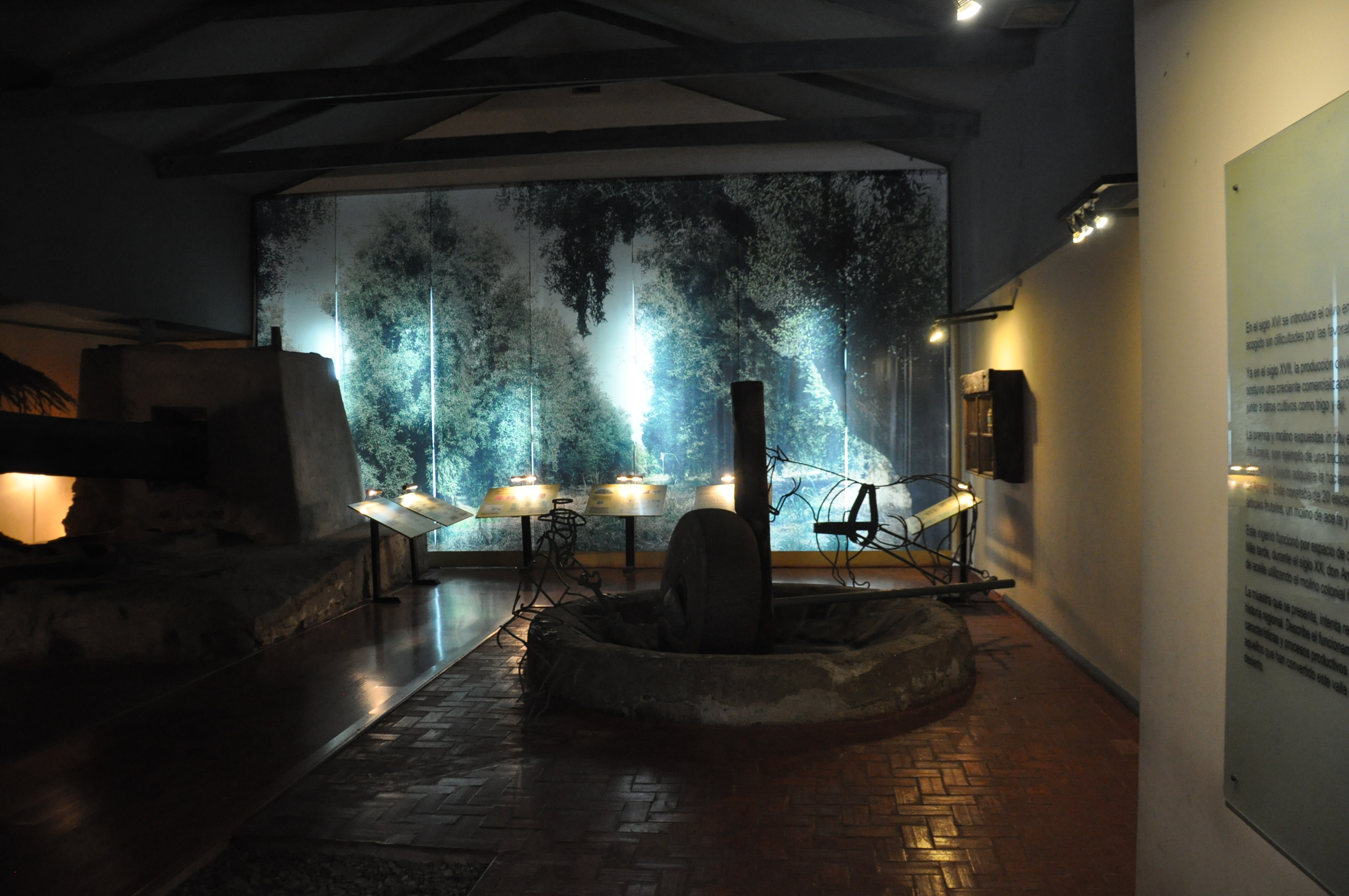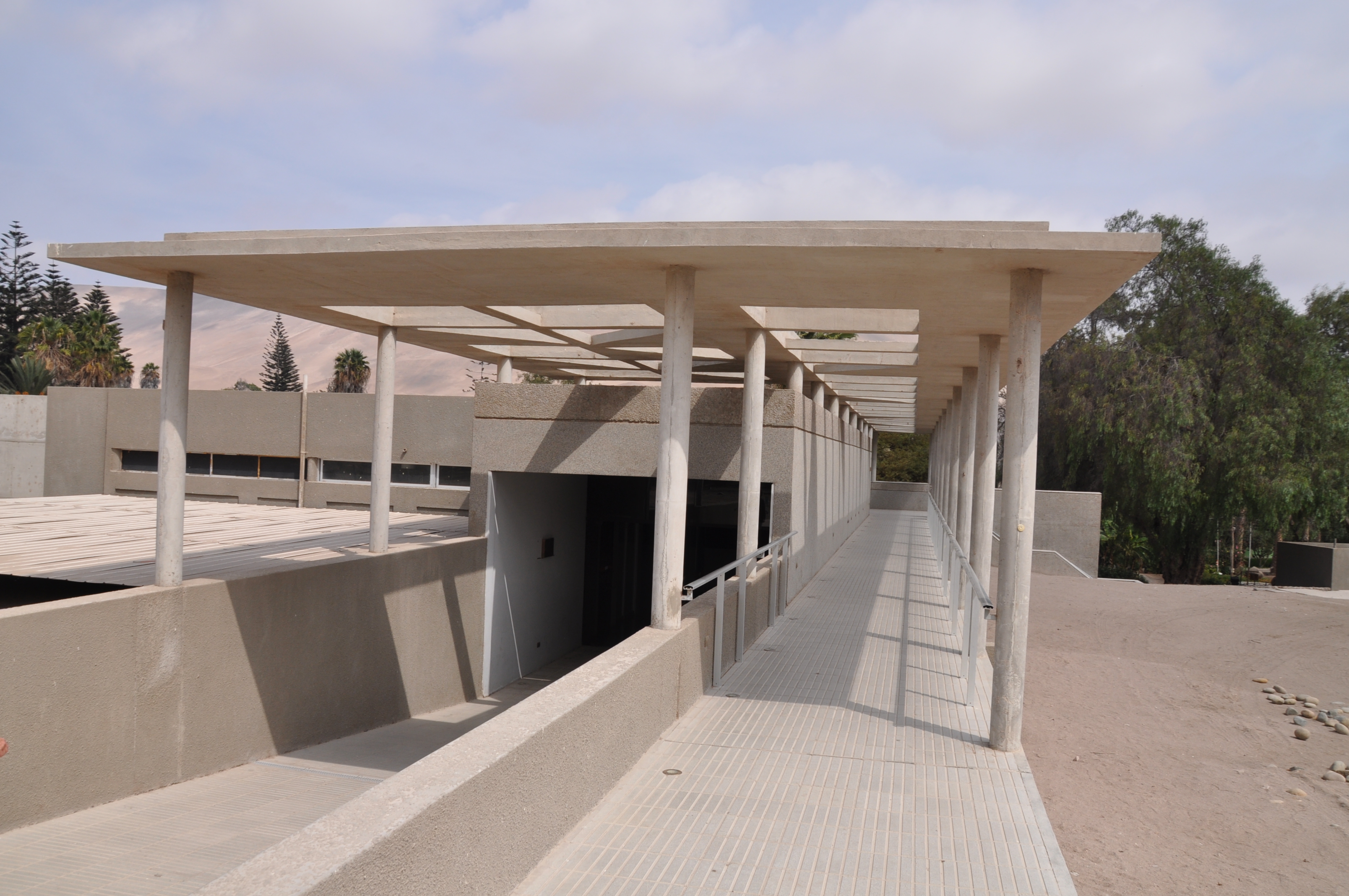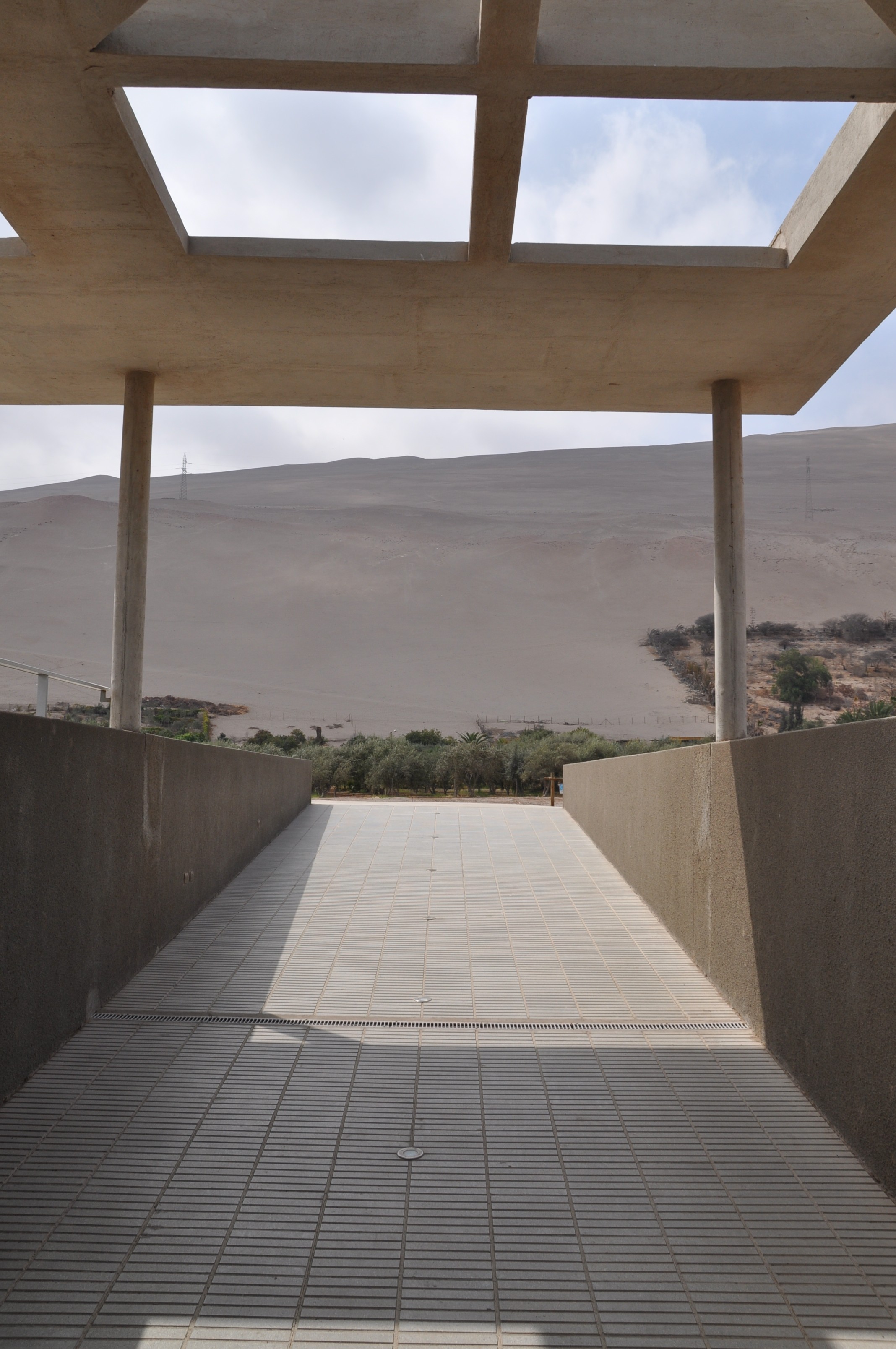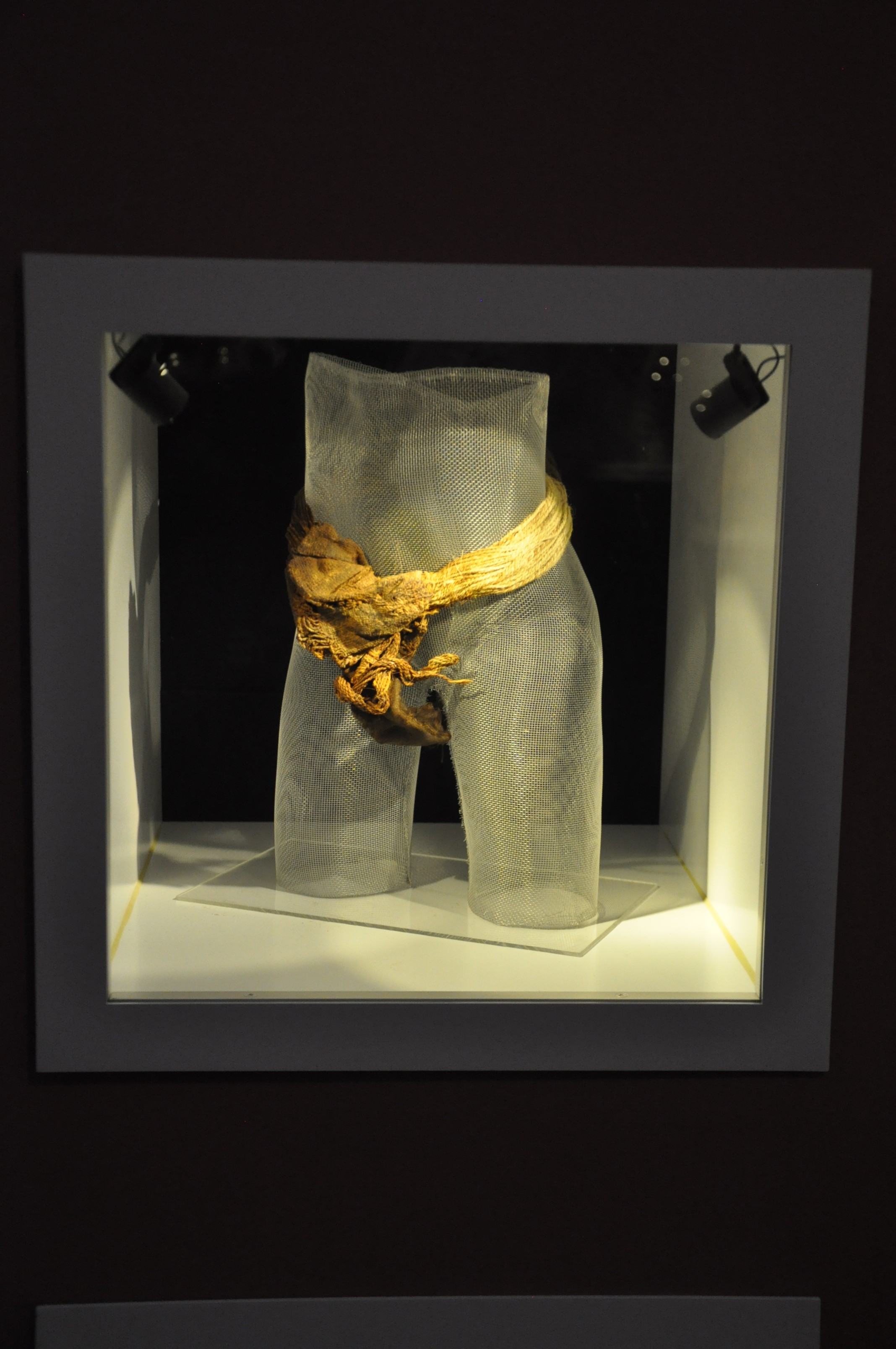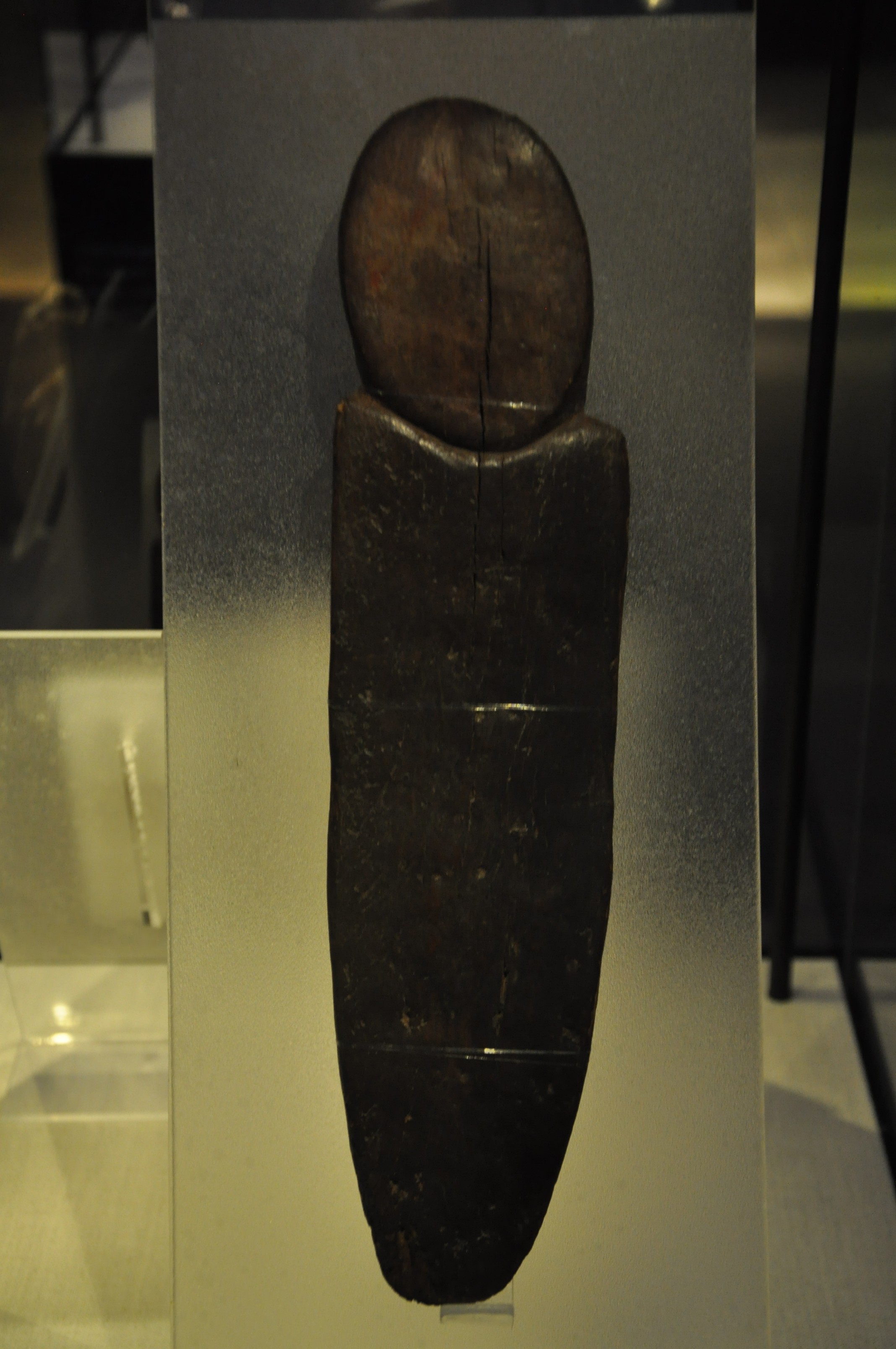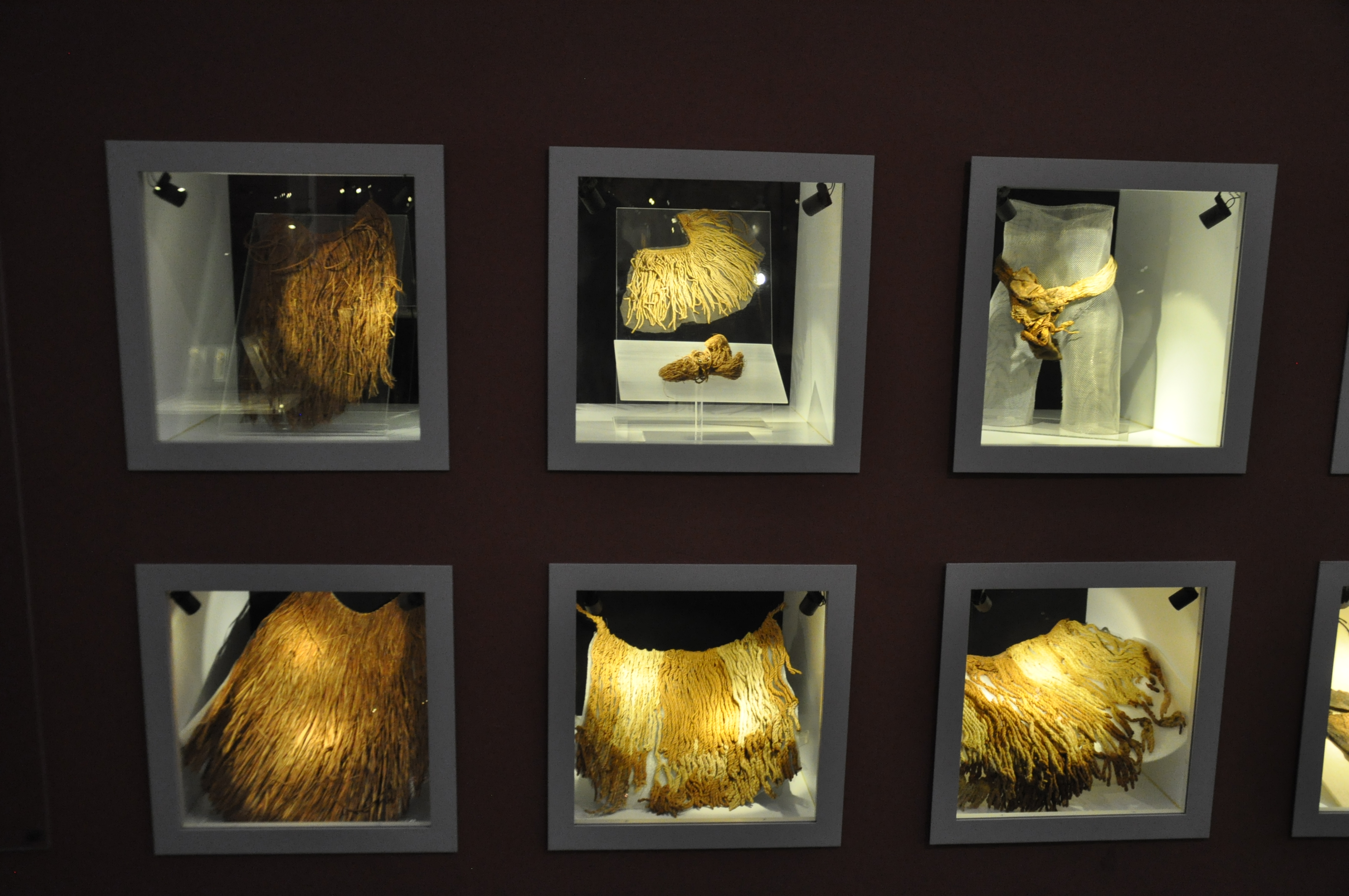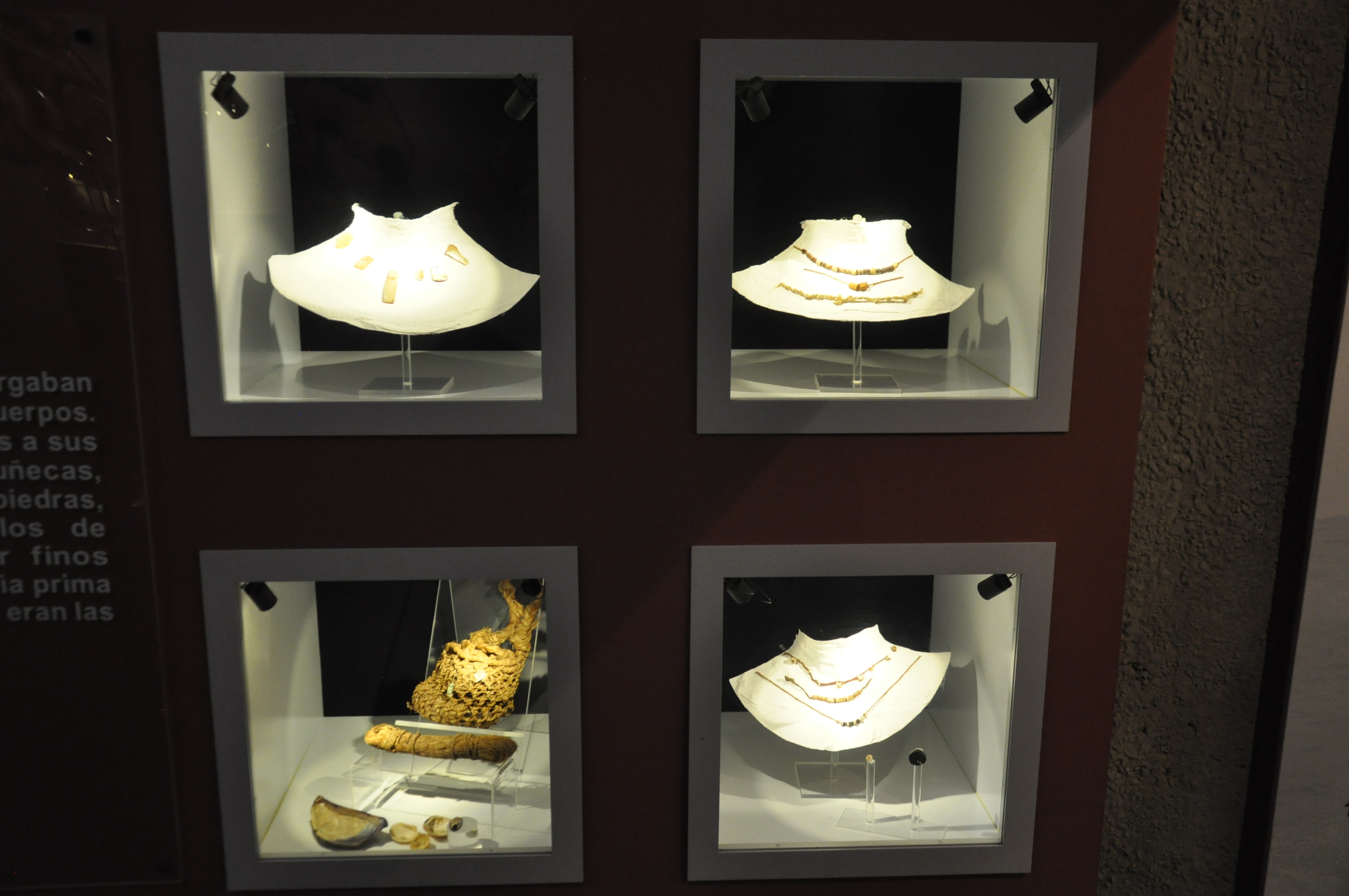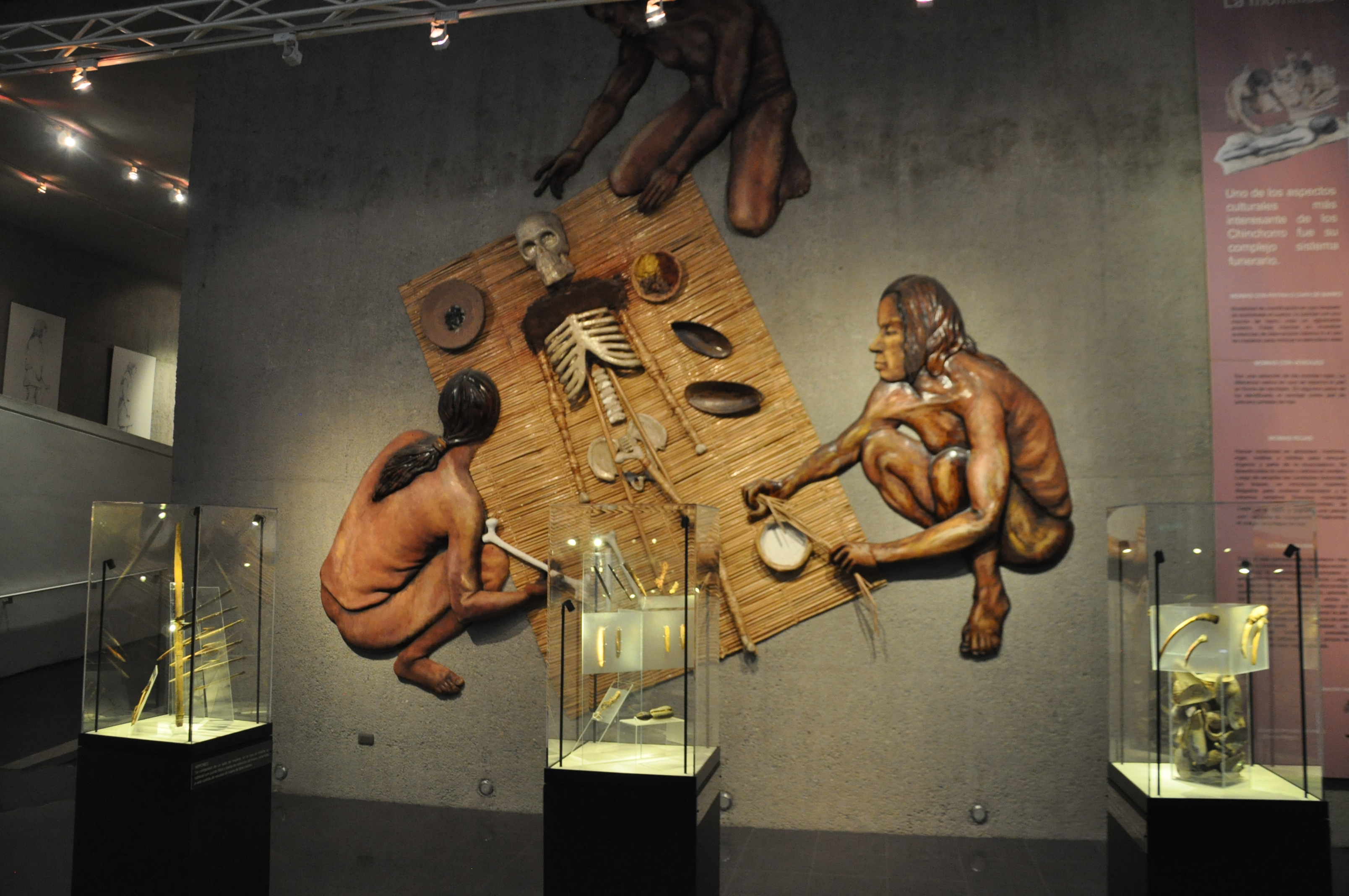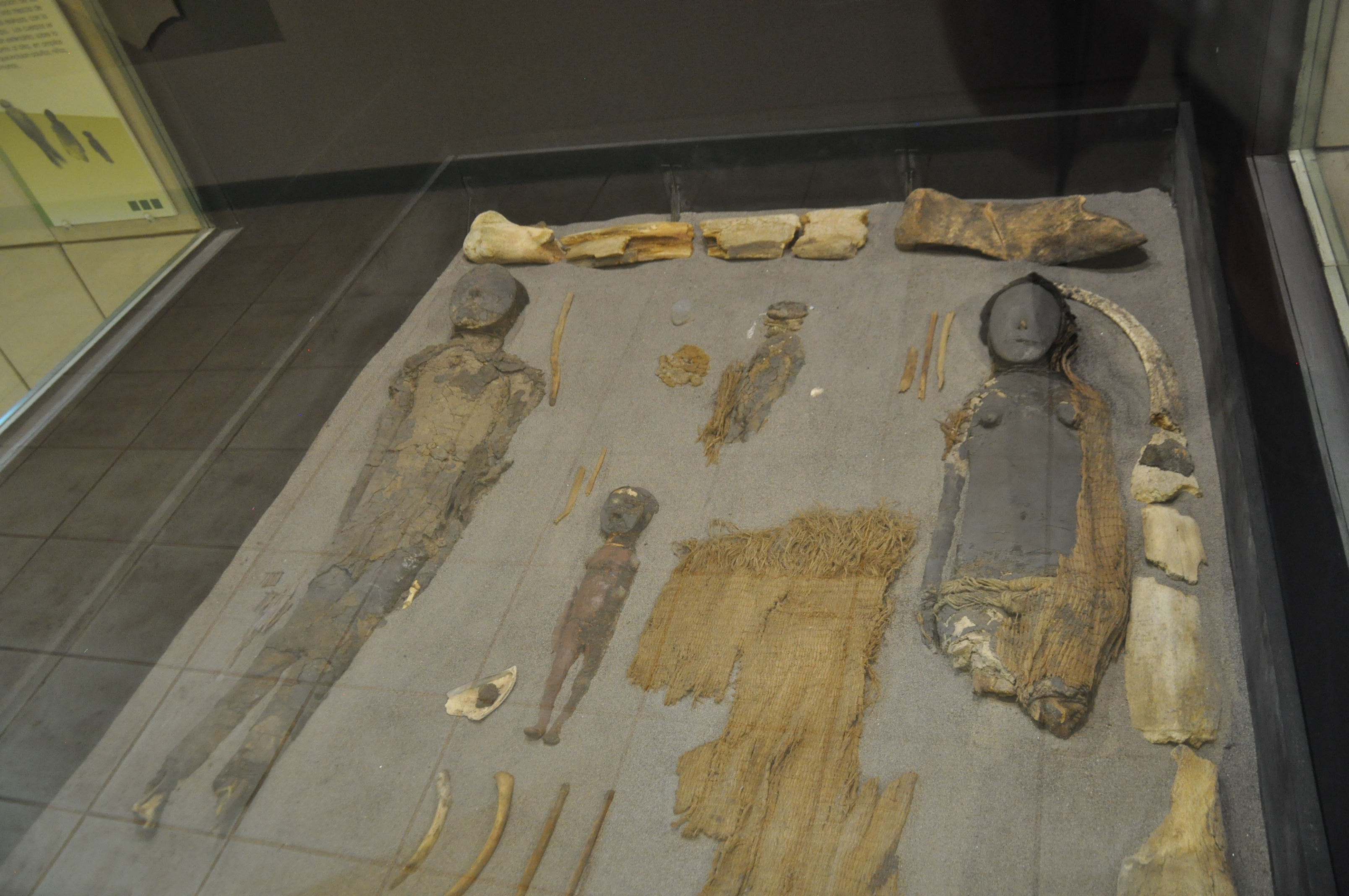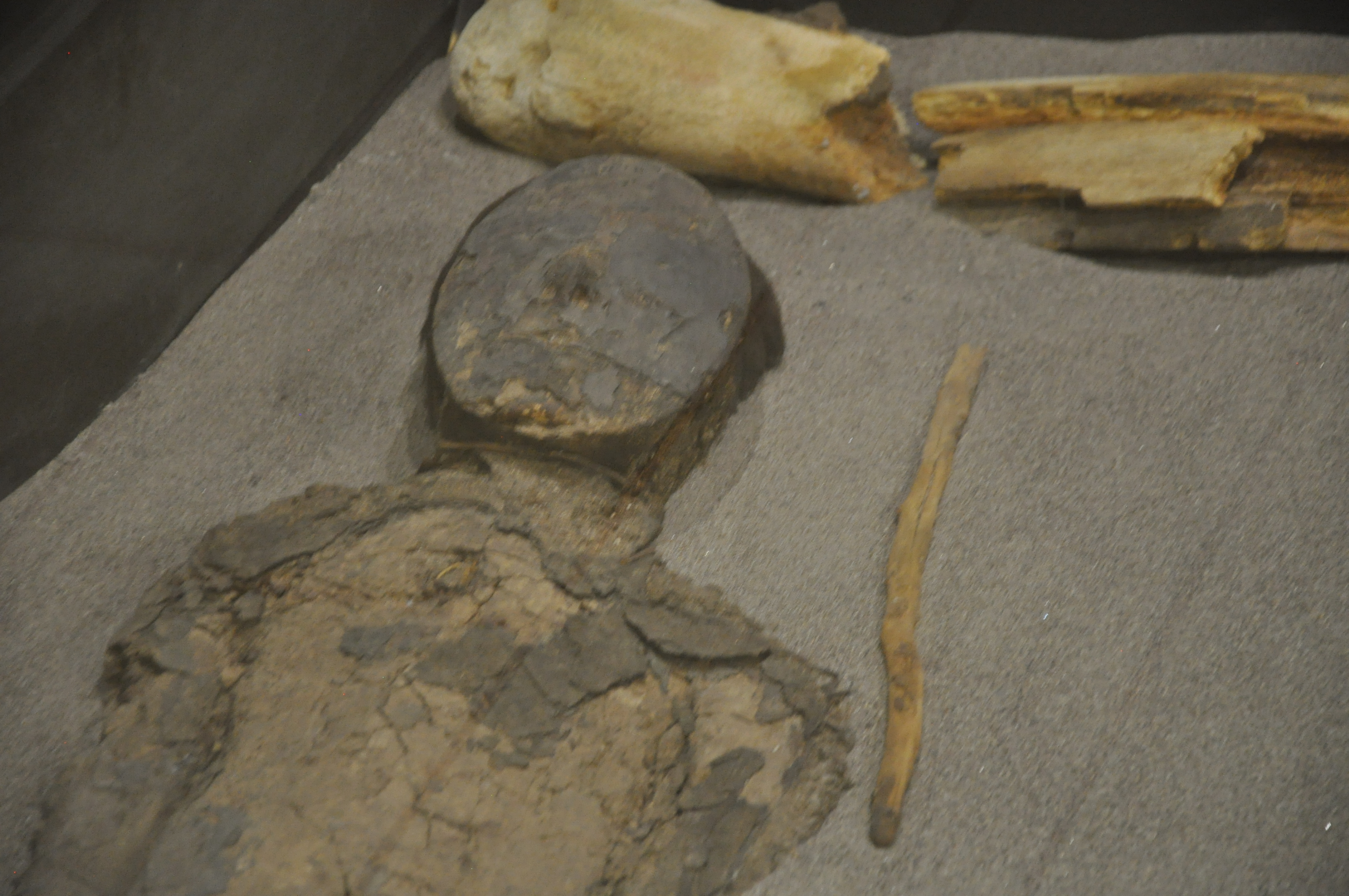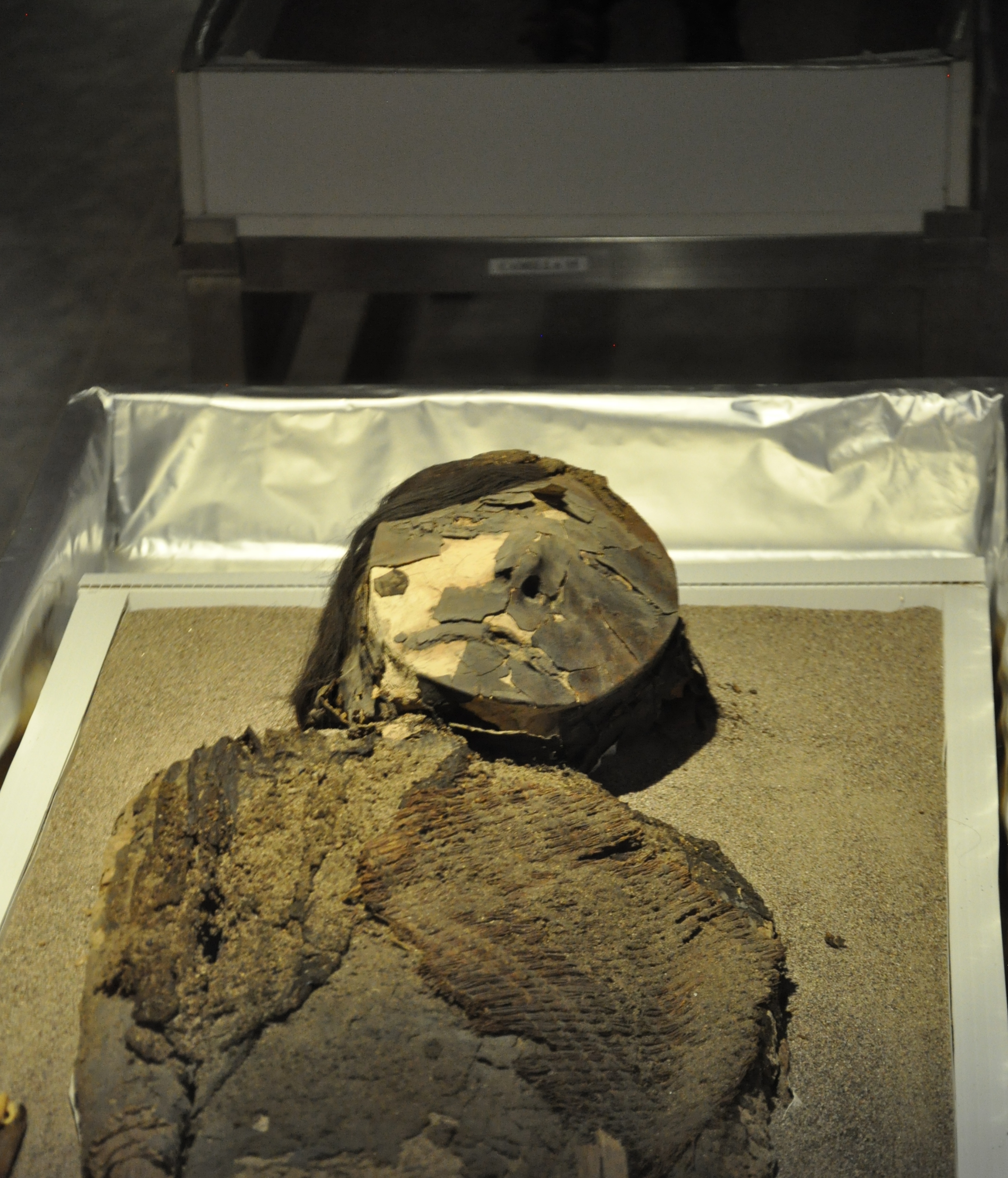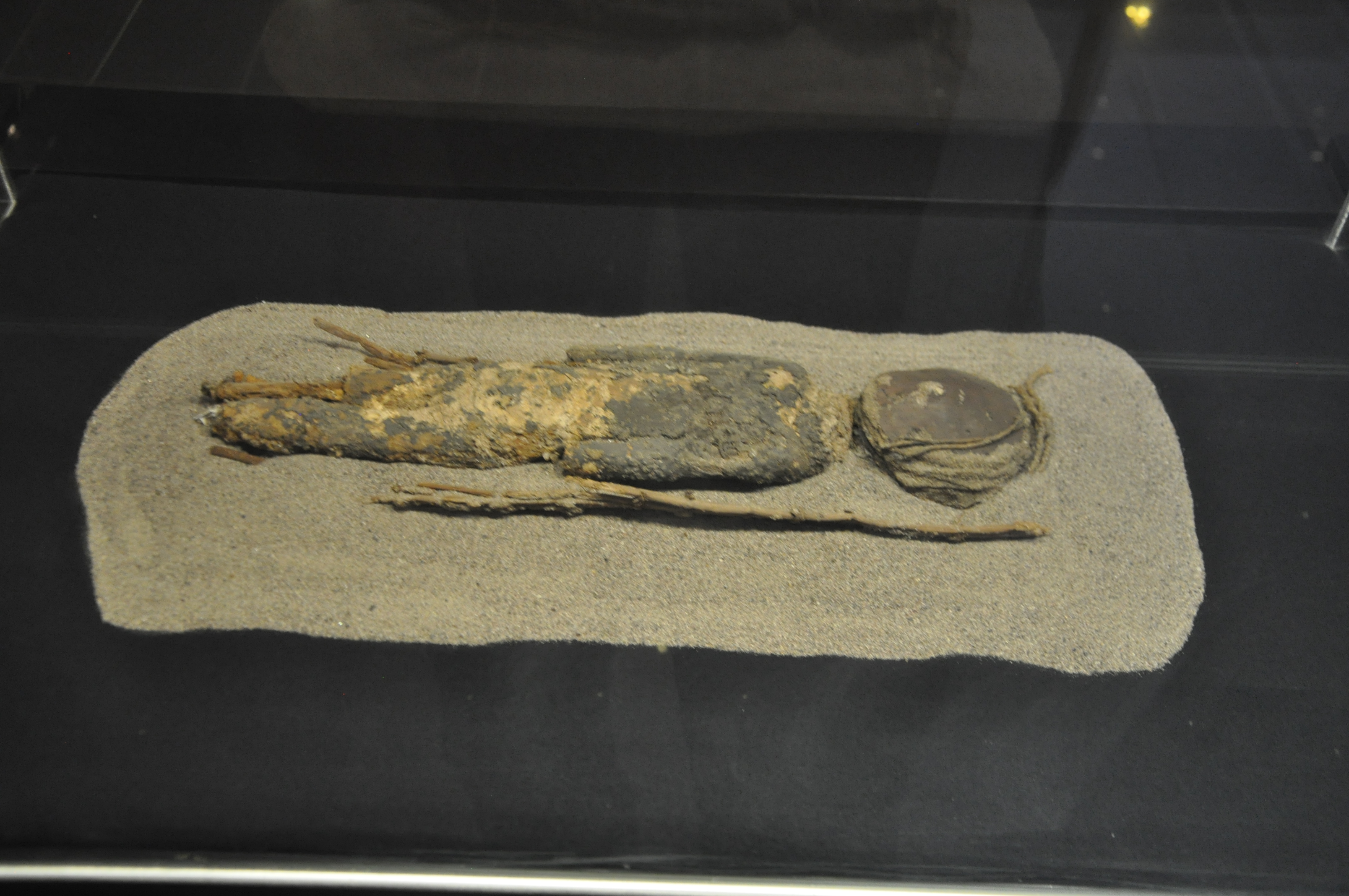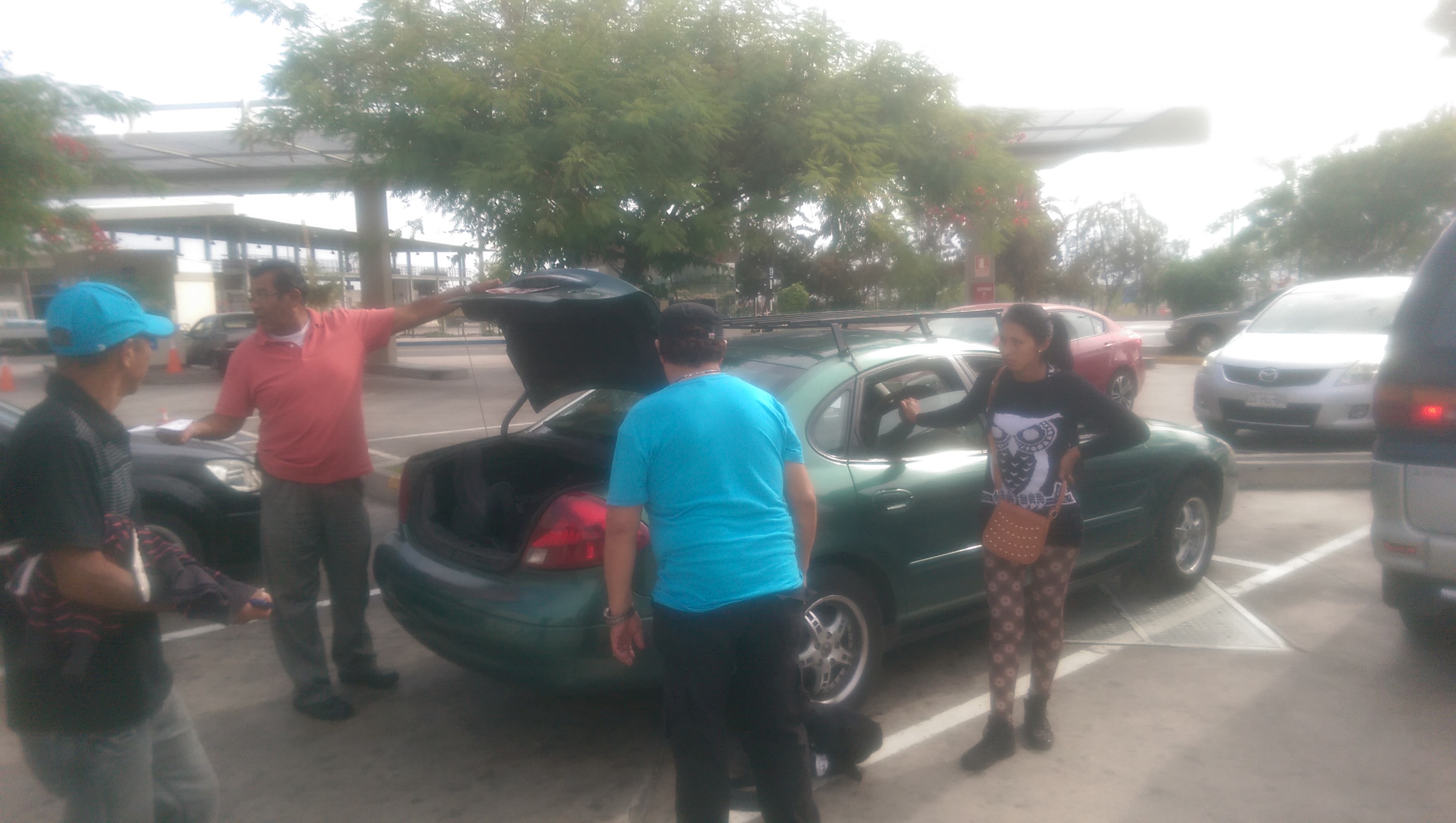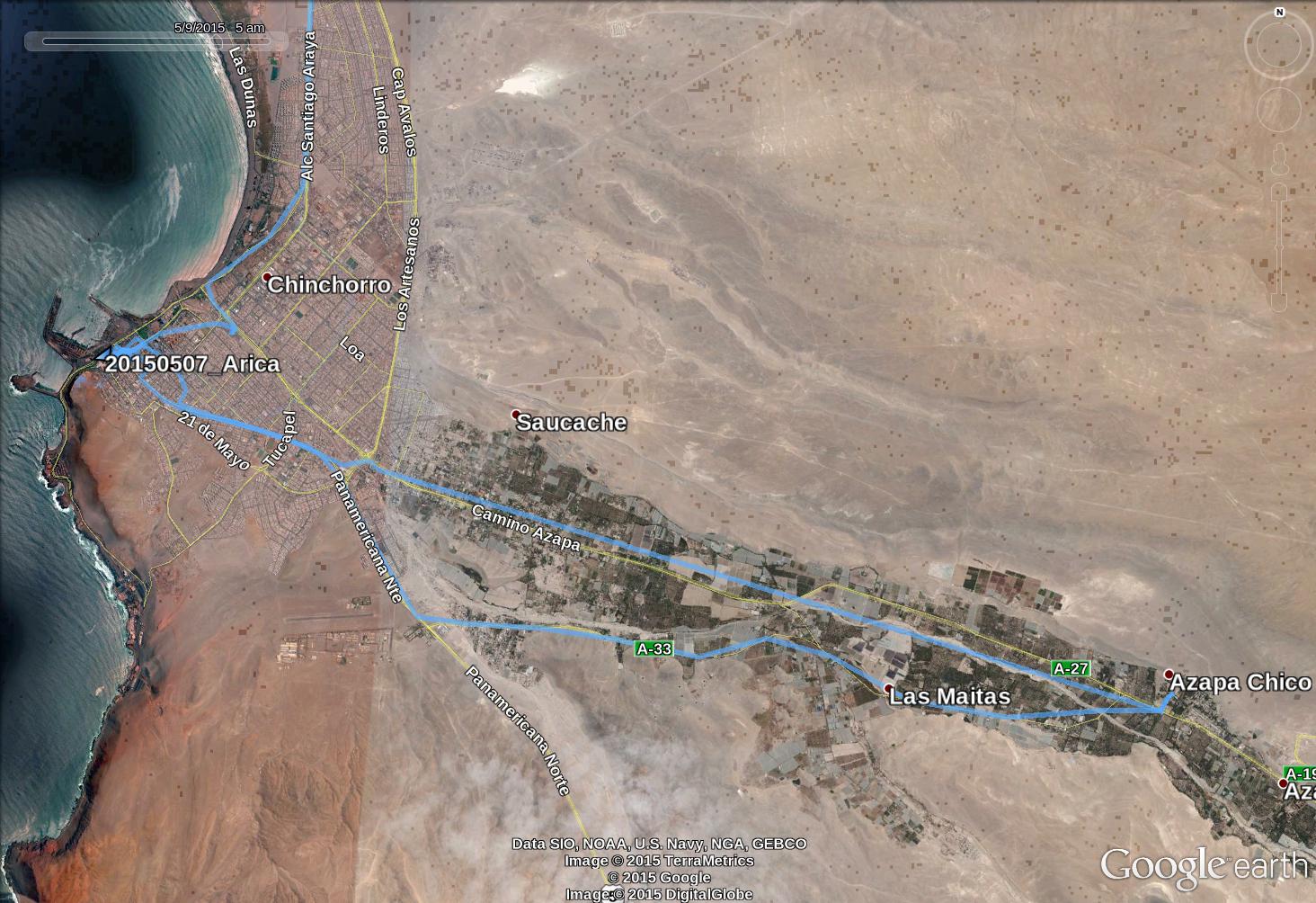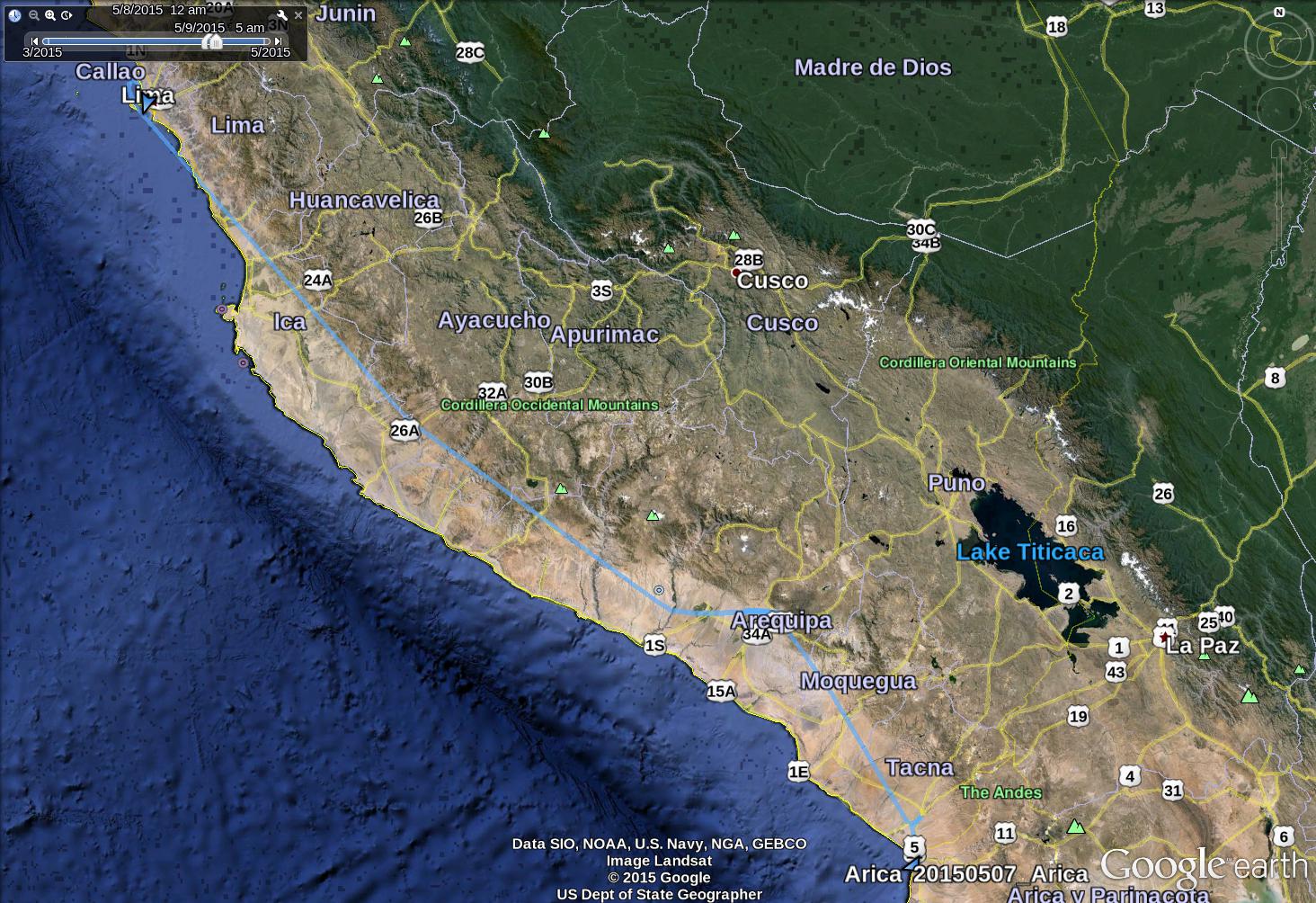In the morning, l learned that the train to Tacna is actually not running because of construction work. I had to resort to a taxi, and spend the morning realigning my travel plan, booking hotels and planes (Tacna->Lima, Lima -> Chiclayo), and researching about alternate means of transportation in northern Peru (Chiclayo, Chachapoyas, and Cajamara), i.e. small planes rather than bus.
Museo Arqueológico de San Miguel de Azapa
I then went to the Museo Arqueológico de San Miguel de Azapa which is about 15 km from Arica to the west. I had thought about skipping it — I am glad that I chose to go there.
The First Room: Indigenous Cultures of the Region
The museum exhibits objects left by different cultures that lived over the millennia in this part of the Atacama desert. They are presented in the first room that covers a time range from 7000 BC until 18th century, i.e. it end with an olive press dating from the time of the Spanish colonization. All cultures in the region were skilled craftsman that produced clothing, tools, and other things of daily need from what their environment gave them. As none of these cultures produced a script, their way of living can only be deduced from the objects they left. Nothing is known about their history. It is however visible in the pottery when the Inca added this part of the region to their empire during the 15th century: The pottery becomes simple. Apparently, people were more busy producing tribute for the Inca and had no time to work on sophisticated artefacts. Inca rule was oppressive.
The Second Room: The Chinchorros
There is a focus on the Chinchorro people that are presented in a dedicated room. The Chinchorro roamed the coastal region of what today is southern Peru and northern Chile from at least 7000 BC to 1700 BC. It is not known how these people called themselves, but were named after a beach where traces of them were found. The Chinchorros developed from hunter-gatherers into fishermen and as investigations of they bones proofed, they relied on the sea for most part of their diet. There were not only fishermen but also skilled artisans producing baskets and mats. And they developed a complex funerary system, that involved artificial mummification as early as 5000 BC. To put things in perspective, the Egyptians probably started intentional mummification around 2600 BC. It peaked from about 1500 BC to 1000 BC.
Black Mummies
The first artificially mummified bodies, black mummies, date from about 5000 BC to 3000 BC. They involved the complete disassembly of the body, heat-drying it, the removal of the flesh, and a reconstruction of the inner structure with sticks, reeds, and strings. Then, the body was covered with a white ash paste. The skin was put back into place (sometimes also sea lion skin was used), and the cavities were filled in with grass, ashes, spoil, and animal hair. Finally, the body was painted with black manganese, and a wig with short black human hair was attached.
Red Mummies
Red mummies only existed for 500 years from 2500 BC to 2000 BC. The embalming process was simpler. The inner organs were removed through incisions. The head was cut, and the brain removed. A wig from long human hair was attached to the head with a clay cap. Often, it was covered with a clay mask. The body was stuffed with various materials to return a human like appearance, and the incisions were sewn up with reed cord. Except for the hair, and sometimes for the face, everything was painted with red ochre.
Mud-Coated Mummies
From 3000 BC to about 1300 BC, the Chinchorros mud-coated their deceased. The inner organs needed no longer to be removed. The body was covered in a thick coat of mud, and sand. As binder eggs or fish glue was used. The artisans used the clay to mold faces and other features. As these mummies look more like dolls, it seems not disrespectful or disturbing to me to show some pictures of them.
The Chinchorros After 1300 BC
The Chinchorro abandoned the funerary custom of artificial mummification after 1300 BC. That however does not mean that they disappeared. They continued living along the coastline. Their dead were now naturally mummified by the desert (as before 5000 BC).
Crossing the Border and Flying to Lima
I took a taxi collectivo to cross the border and went from Arica to Tacna, Using an offline version of google translate, I improved my little bit of Spanish and made some tardy small-talk — unfortunately, the guy I was talking had some camera accessories and wrist watches that he did not declare at the customs. The number of parts suggested that these were not for private use. He hence had to stay at the Chilean side of the border, the taxi continued without him, and I had lost my conversation partner.
The rest of the day clicked away like a clockwork. I reached the airport well ahead of time, the plane left and arrived in Lima as scheduled.
